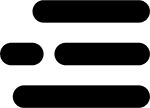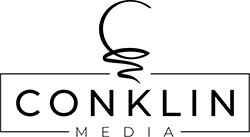Facebook (Meta) doesn’t grow businesses by accident. It grows businesses when you run strategic campaigns that connect specific offers to specific prospects. The real question isn’t whether the platform works — it’s how you use it for business growth in a way that actually impacts your bottom line. So, how do you use Facebook (Meta) for business growth?
First, you need to target your highest-margin offering to a hyper-specific audience instead of promoting your entire company to everyone. Do this by using Facebook’s (Meta) targeting to reach decision-makers by job title, company size, and industry, not just demographics. From there, create campaigns within the ProfitPaths® framework: identify your IMPACT Offering, define your IMPACT Prospect, build Prospect Magnets, and track conversion to revenue.
Most CEOs treat Facebook (Meta) like a mystery — they know it works for someone, but they’re not sure it’ll work for them. After helping thousands of companies over 20 years generate predictable revenue. The answer above is just the tip of the iceberg.
Let’s dig in deeper.
Why Most Facebook (Meta) Campaigns Fail
Here’s the problem: businesses try to “do Facebook marketing” without a strategy. They boost posts, run awareness campaigns, and hope something sticks.
That’s not marketing. That’s expensive hope.
Real Facebook (Meta) growth happens when you stop marketing your business as a whole and start building focused profit paths.
The ProfitPaths® Framework for Facebook (Meta)
We shout ProfitPaths® from the rooftops, and we’re going to keep doing it.
Why? It’s a proven system that works. Business growth all is about building profitable systems. Growing your business on Facebook (Meta) requires the same mindset: proven methodologies that profitably scale campaigns, grow your business, and put more money in your bank account.
Here’s how to do that.
Step 1: Identify Your IMPACT Offering
Don’t start by asking “what should we post on Facebook (Meta)?”
Start by asking: “Which product or service would transform our business if we doubled its sales?”
Use the IMPACT criteria:
- Interest – What naturally excites your market?
- Margin – What’s your most profitable offering?
- Potential – What has explosive growth potential?
- Attract – What draws ideal customers and referrals?
- Competition – What faces minimal market saturation?
- Tenure – What creates long-term client value?
Example: A B2B manufacturer shouldn’t run generic “we make industrial equipment” ads or expect their going to double their annual revenue by posting about national pie day. That’s great (for what it is). But we need to get strategic.
Instead, in this example, the B2B manufacturer should focus Facebook (Meta) campaigns on their highest-margin custom automation solution that solves a specific plant efficiency problem.
One offering. One campaign. Maximum focus.
Step 2: Define Your IMPACT Prospect
Facebook (Meta)’s power is precision targeting. But most businesses waste it.
Your IMPACT Prospect isn’t “business owners” or “people interested in our industry.” It’s specific:
- Operations Directors at $50M-$200M food manufacturers
- IT Directors at healthcare systems with 500-2,000 employees
- Marketing VPs at B2B SaaS companies in the $10M-$50M range
Facebook (Meta) lets you target by:
- Job titles
- Company size
- Industries
- Interests
- Behaviors
Use it. The more specific your prospect, the higher your conversion rate and the lower your cost per lead. The recommendations above don’t even touch on the possibilities of custom audiences and lookalike audiences (more on that below). Upload your customer list from your CRM, and Facebook (Meta) builds an audience of prospects who match your best buyers’ profiles.
Step 3: Create Prospect Magnets
Your Facebook (Meta) ads shouldn’t just sell your product. They should offer something valuable that attracts your IMPACT Prospect.
Effective Prospect Magnets:
- Calculators or assessment tools – “Calculate how much downtime costs your plant annually”
- Industry benchmarks – “2025 Manufacturing Efficiency Report: See how you compare”
- Case studies – “How [Company Name] cut production costs by 34%”
- Strategic webinars – “3 automation mistakes costing you $500K+ yearly”
- Custom assessments – Free analysis or audit of their current situation
The pattern: Offer insight or value related to the problem your IMPACT Offering solves, based on your industry and your target audience’s pain points.
Step 4: Target and Test
Here’s where Facebook (Meta) separates from other platforms.
Start with warm audiences:
- Custom audience from your customer email list
- Website visitors (using Facebook (Meta) Pixel tracking)
- People who engaged with your content
- Video viewers
Then expand to cold audiences:
- Lookalike audiences (Facebook (Meta) finds people similar to your customers)
- Interest and job title targeting
- LinkedIn profile targeting through Facebook (Meta)’s database
Run two types of campaigns:
1. Solution-Based Marketing: Target people already showing buying signals
- Retarget website visitors
- Follow up with content downloaders
- Re-engage past customers for upsells
2. Interruption Marketing: Reach cold prospects with compelling hooks
- Challenge their status quo
- Present surprising data
- Showcase transformation stories
Most B2B campaigns need both.
Step 5: Optimize Your Conversion Path
This is where most campaigns die.
Your ad is just step one. The path matters:
Ad → Landing Page → Lead Capture → Sales Follow-up
Each step needs optimization:
Landing Page Rules:
- Match the message in your ad (same headline, same offer)
- One goal only (no navigation menu, no distractions)
- Social proof from recognizable companies
- Clear form above the fold
- Mobile-optimized (60%+ of traffic is mobile)
Lead Follow-up:
- Respond within 5 minutes (seriously—this matters)
- Have a qualification process
- Track which campaigns produce quality leads
- Feed data back into Facebook (Meta) for optimization
Step 6: Track What Matters
Vanity metrics don’t pay bills. Track metrics tied to revenue:
For lead generation:
- Cost per lead
- Lead-to-opportunity conversion rate
- Opportunity-to-customer conversion rate
- Customer acquisition cost
- Return on ad spend (ROAS)
For e-commerce:
- Cost per purchase
- Average order value
- Customer lifetime value
- ROAS
If you’re spending $10,000/month on Facebook (Meta) but don’t know these numbers, you’re flying blind.
The Technical Setup (Simplified)
You need three things working correctly:
1. Facebook (Meta) Business Manager Set up properly with:
- Your ad account
- Facebook (Meta) Pixel installed on your website
- Conversion events tracking (form submits, purchases, calls)
- Custom audiences from your customer data
2. Targeting Configuration
- Demographics: Age, location, language
- Detailed targeting: Job titles, company size, industries
- Custom audiences: Your data
- Lookalike audiences: Facebook (Meta)’s data based on your customers
3. Campaign Structure
- Campaign level: Objective (leads, conversions, traffic)
- Ad set level: Audience, budget, schedule
- Ad level: Creative, copy, call-to-action
What Good Performance Looks Like
B2B benchmarks (targeting $10M+ companies):
- Lead cost: $50-$300 depending on offer complexity
- Click-through rate: 1-3% on cold traffic, 5-10%+ on warm
- Landing page conversion: 10-25%
- Lead-to-opportunity: 20-40%
B2C benchmarks (e-commerce or local services):
- Cost per click: $0.50-$3.00
- Conversion rate: 2-5%
- ROAS: 3:1 minimum, 5:1+ at scale
Your numbers will vary. What matters is knowing them and improving them over time.
The Compounding Effect
Here’s what separates businesses that grow from businesses that stagnate:
One-off campaigns get temporary results. Systems compound over time.
When you build a Facebook (Meta) system using ProfitPaths®:
- Month 1: You test and learn
- Month 3: You identify what works
- Month 6: You scale profitable campaigns
- Month 12: You have a predictable lead machine
- Year 2: You’ve built multiple profit paths across different offerings
This is how we’ve helped businesses grow from $8M to $22M in two years. Not through luck — through systematic, focused execution.
The CEO’s Role
You don’t need to become a Facebook (Meta) ads expert. But you do need to hold your team accountable to the right metrics.
Ask these five questions:
- What specific offering are we promoting?
- Who exactly are we targeting (job titles, company attributes)?
- What’s our cost per qualified lead?
- What percentage of leads become opportunities?
- What’s our customer acquisition cost vs. customer lifetime value?
If your marketing team can’t answer these clearly, you have a strategy problem, not a Facebook (Meta) problem.
Ready to Build Your Growth System?
Facebook (Meta) is just a channel. The ProfitPaths® methodology is the strategy that makes it work.
Want to see how this applies to your specific business?
Use our AI-powered ProfitPaths® template tool. Enter your business name and description, and get a customized growth strategy outline in under 3 minutes — including your IMPACT Offering, IMPACT Prospect, and specific channel recommendations.
Try Our ProfitPaths® Tool (It’s free, and surprisingly useful)
Or schedule a growth strategy session where we analyze your business and identify your highest-potential profit path.
About 5K: For over 20 years, we’ve helped businesses stop reacting and start building. Our ProfitPaths® methodology blends AI, automation, and data-driven marketing to generate high-quality leads and create scalable growth systems. We’ve helped 1,000+ companies create predictable revenue streams—from $8M to $30M growth stories to 606% SEO increases.









